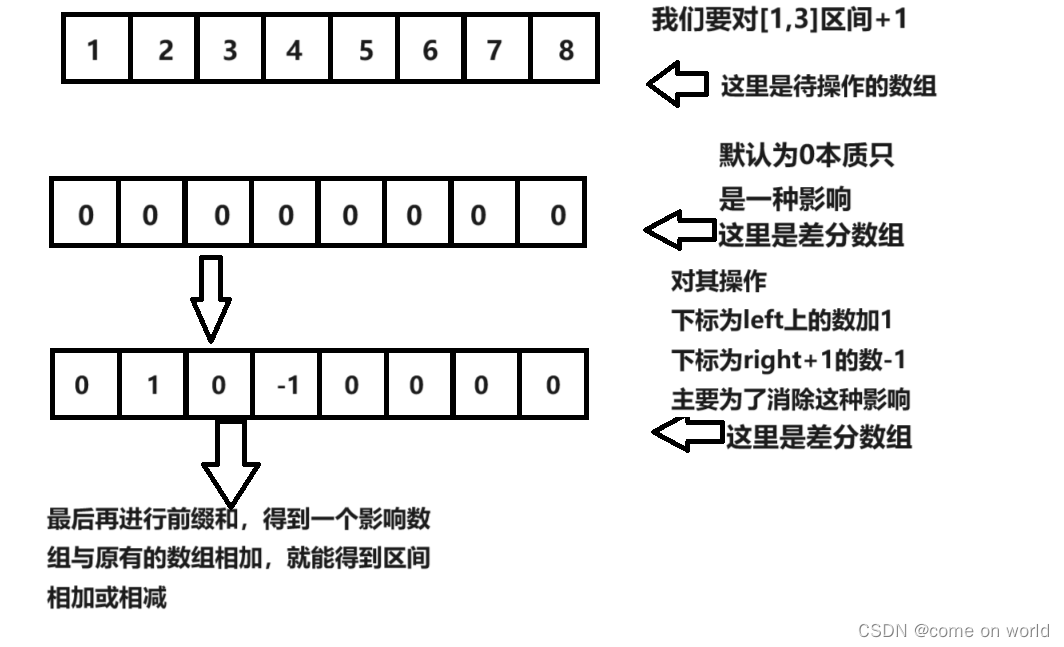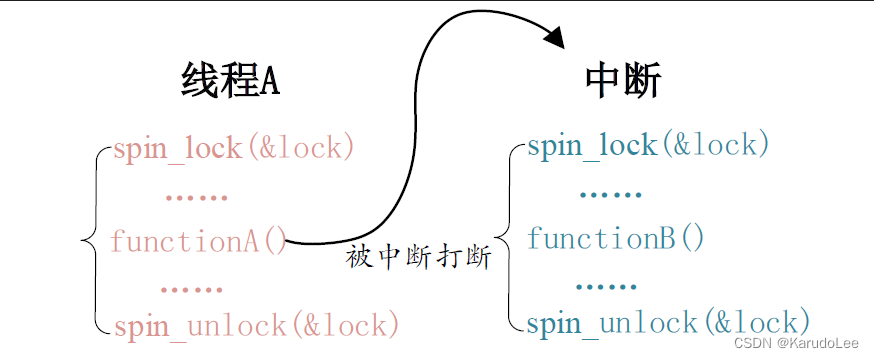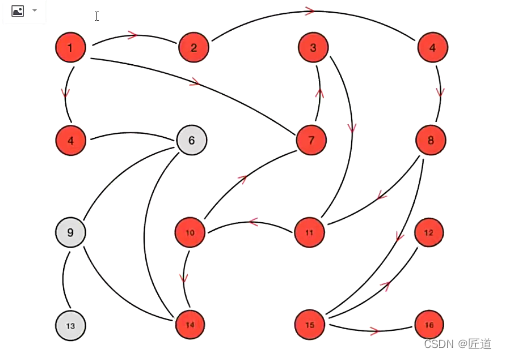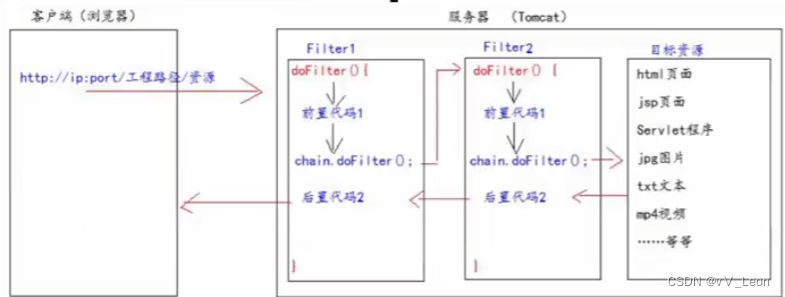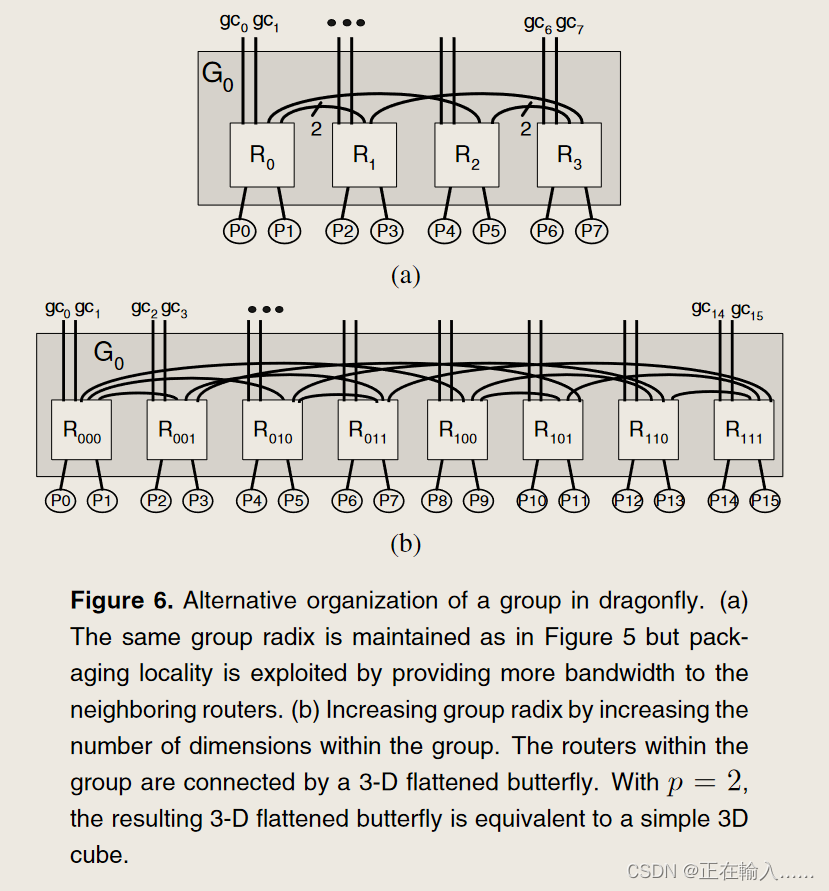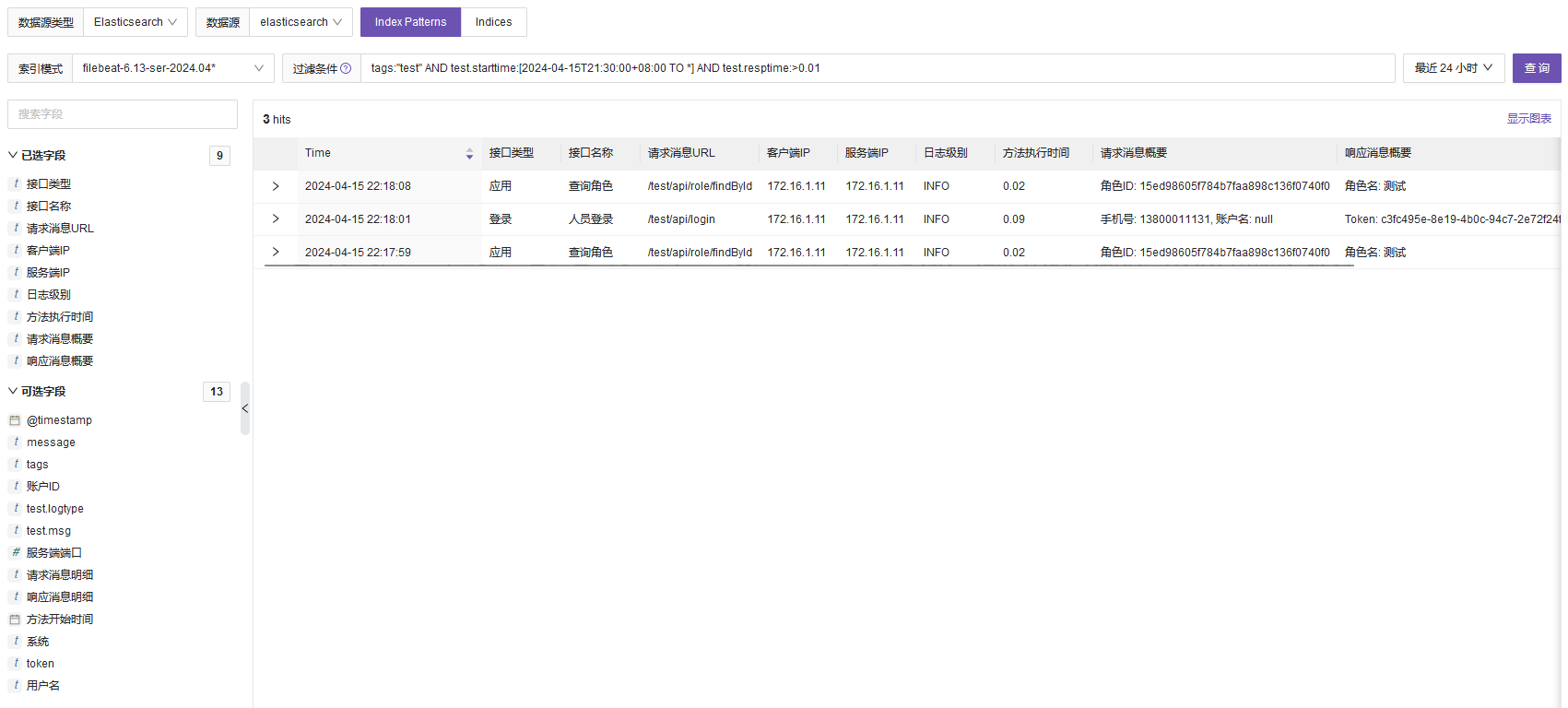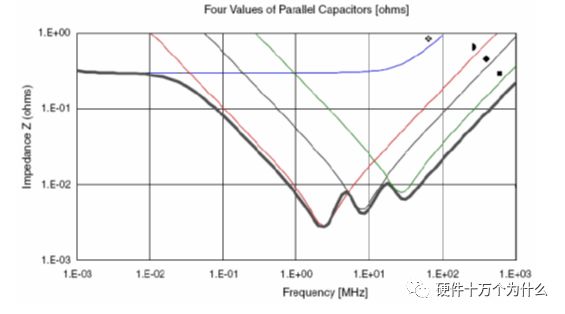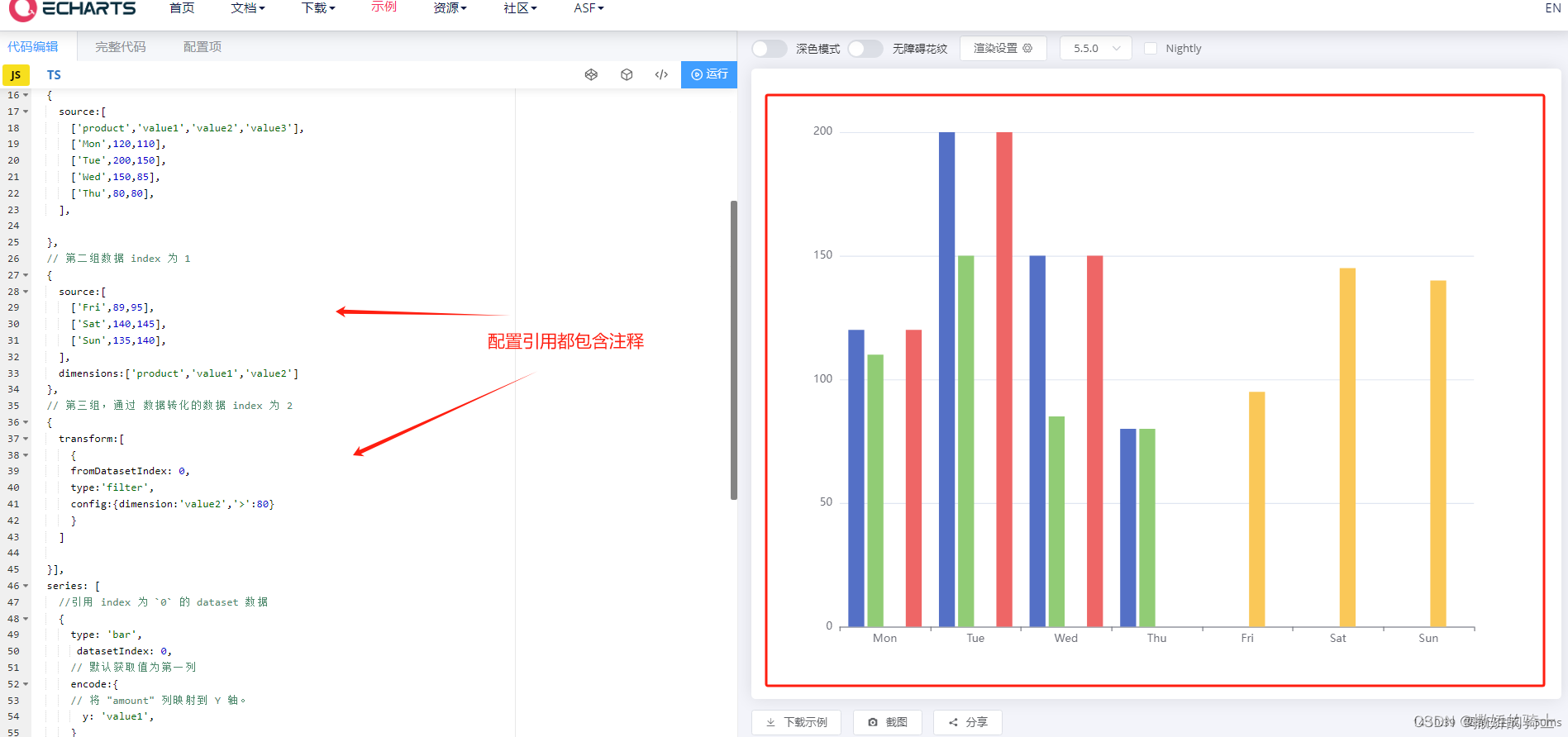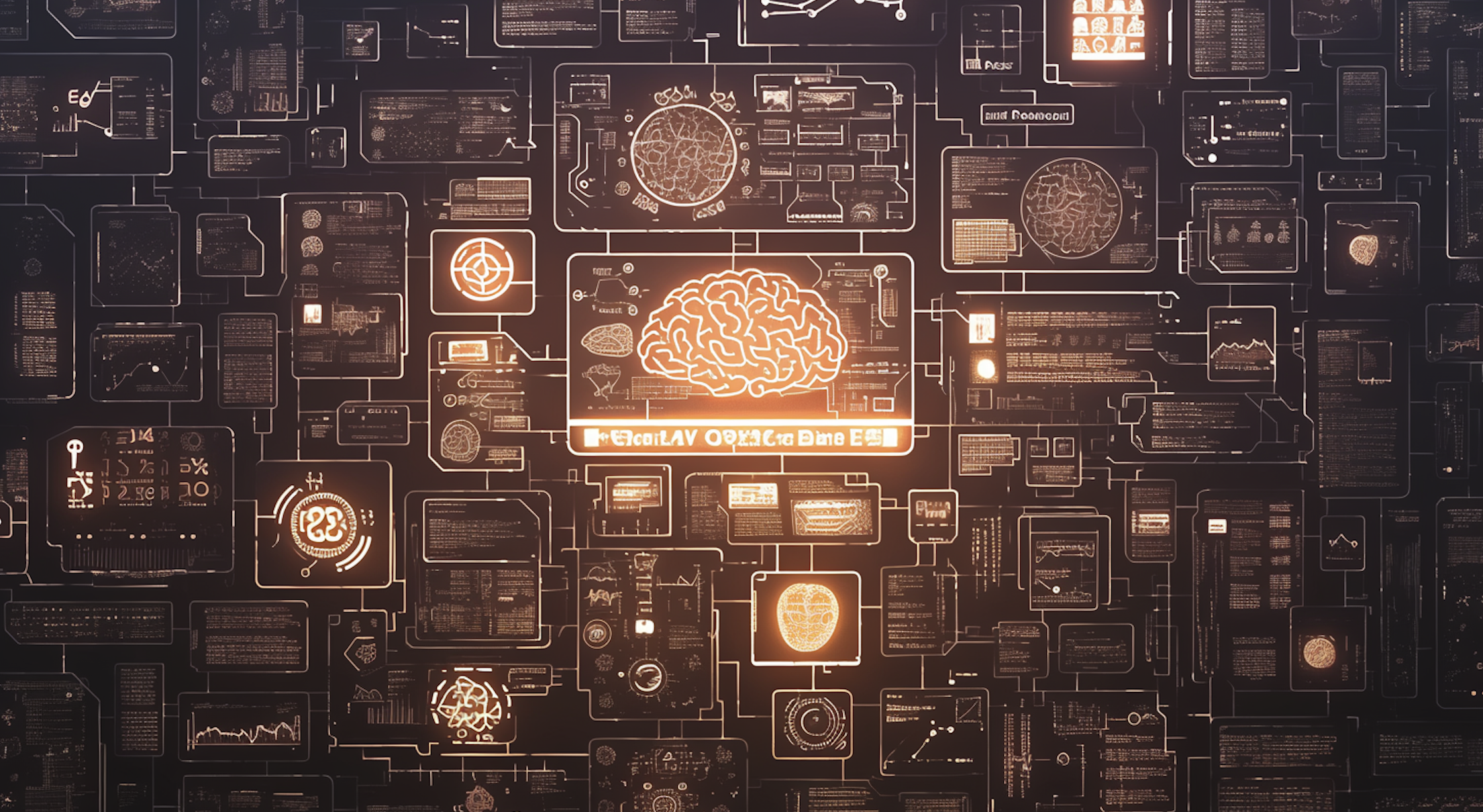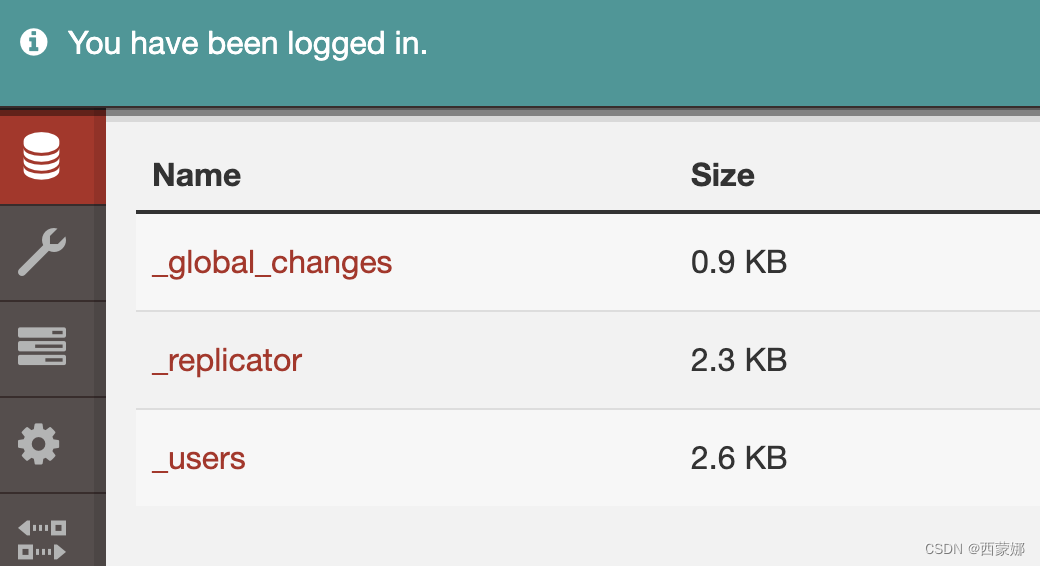一、3D坐标系
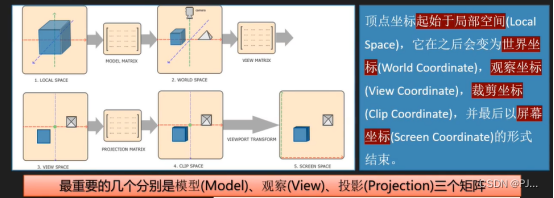



记住V_clip = M_projection * M_view * M_model * V_local就行,可以在顶点着色器里面添加位置信息:
#version 330 core
layout (location = 2) in vec3 aPos;//location属性位置有16个
layout (location = 3) in vec3 aColor;
layout (location = 1) in vec2 aTextureCoordinates;
out vec3 ourColor;
out vec2 TextureCoordinates;
uniform mat4 model;
uniform mat4 view;
uniform mat4 projection;
void main()
{
gl_Position = projection * view * model * vec4(aPos, 1.0);
ourColor = aColor;
TextureCoordinates = aTextureCoordinates;
}
片段着色器不用改变:
#version 330 core
out vec4 FragColor;
in vec3 ourColor;
in vec2 TextureCoordinates;
uniform sampler2D textureWall;
uniform sampler2D textureLe;
uniform sampler2D textureSmall;
uniform sampler2D texturePJ;
uniform float ratio;
void main()
{
FragColor = mix(texture(textureWall, TextureCoordinates), texture(textureLe, TextureCoordinates), ratio);
}
二、透视投影
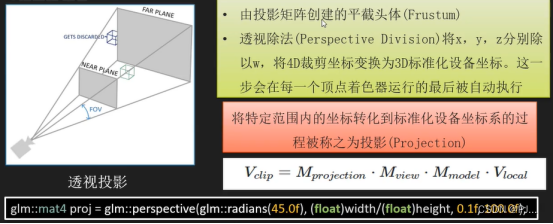
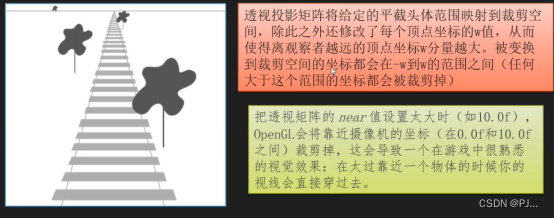

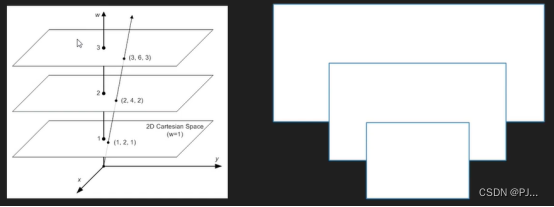
这方面可以恶补下线性代数知识。
三、代码实现
3.1 构建一个正方体的点
在OpenGL里面,三角形是基础图形,正方体6个面,每一个面都是两个三角形拼接而成,所以点需要2×3×6=36个顶点坐标,在坐标的数组里面可以放入颜色、纹理等信息,后面调用解析的时候注意步长和位置即可。
在编写顶点的时候,只要能连起来是个正方体即可,不同的点做原点都可以,但是一定要连起来,纹理是2个数来表示X和Y,和顶点坐标没有关系。下面是构建的一个例子:
float vertices[] =
{
//positions //texture coordinates
//正面
-0.5f, -0.5f, 0.5f, 0.0f, 0.0f,
0.5f, -0.5f, 0.5f, 1.0f, 0.0f,
0.5f, 0.5f, 0.5f, 1.0f, 1.0f,
0.5f, 0.5f, 0.5f, 1.0f, 1.0f,
-0.5f, 0.5f, 0.5f, 0.0f, 1.0f,
-0.5f, -0.5f, 0.5f, 0.0f, 0.0f,
//背面
-0.5f, -0.5f, -0.5f, 0.0f, 0.0f,
0.5f, -0.5f, -0.5f, 1.0f, 0.0f,
0.5f, 0.5f, -0.5f, 1.0f, 1.0f,
0.5f, 0.5f, -0.5f, 1.0f, 1.0f,
-0.5f, 0.5f, -0.5f, 0.0f, 1.0f,
-0.5f, -0.5f, -0.5f, 0.0f, 0.0f,
//左面
-0.5f, 0.5f, -0.5f, 0.0f, 1.0f,
-0.5f, 0.5f, 0.5f, 1.0f, 1.0f,
-0.5f, -0.5f, 0.5f, 1.0f, 0.0f,
-0.5f, -0.5f, 0.5f, 1.0f, 0.0f,
-0.5f, -0.5f, -0.5f, 0.0f, 0.0f,
-0.5f, 0.5f, -0.5f, 0.0f, 1.0f,
//右面
0.5f, 0.5f, -0.5f, 0.0f, 1.0f,
0.5f, 0.5f, 0.5f, 1.0f, 1.0f,
0.5f, -0.5f, 0.5f, 1.0f, 0.0f,
0.5f, -0.5f, 0.5f, 1.0f, 0.0f,
0.5f, -0.5f, -0.5f, 0.0f, 0.0f,
0.5f, 0.5f, -0.5f, 0.0f, 1.0f,
//上面
-0.5f, 0.5f, -0.5f, 0.0f, 1.0f,
0.5f, 0.5f, -0.5f, 1.0f, 1.0f,
0.5f, 0.5f, 0.5f, 1.0f, 0.0f,
0.5f, 0.5f, 0.5f, 1.0f, 0.0f,
-0.5f, 0.5f, 0.5f, 0.0f, 0.0f,
-0.5f, 0.5f, -0.5f, 0.0f, 1.0f,
//下面
-0.5f, -0.5f, -0.5f, 0.0f, 1.0f,
0.5f, -0.5f, -0.5f, 1.0f, 1.0f,
0.5f, -0.5f, 0.5f, 1.0f, 0.0f,
0.5f, -0.5f, 0.5f, 1.0f, 0.0f,
-0.5f, -0.5f, 0.5f, 0.0f, 0.0f,
-0.5f, -0.5f, -0.5f, 0.0f, 1.0f
};3.2 画出正方体
注意要给M_projection * M_view * M_model这三个矩阵,写在外面也可以,但是多个3D图形的话model需要初始化,不然除了第一次的图形是单位矩阵,for循环后面的都不是。
void OpenGLWidget::paintGL()
{
QMatrix4x4 model;
QMatrix4x4 view;
QMatrix4x4 projection;
unsigned int time = QTime::currentTime().msec();
//先旋转再位移,图片在固定位置旋转
//先位移再旋转,图片围着一个地方转
//具体参考线性代数矩阵知识
// model.rotate(time, 1.0f, 5.0f, 0.5f);//旋转
view.translate(0.0, 0.0, -3);
projection.perspective(45, (float)width()/height(), 0.1, 100);
m_shaderProgram.setUniformValue("projection", projection);
//red:0.0f无色,1.0f全红
glClearColor(0.2f, 0.3f, 0.3f, 1.0f);
glEnable(GL_DEPTH_TEST);//加了立方体可以封面
glClear(GL_COLOR_BUFFER_BIT | GL_DEPTH_BUFFER_BIT);
m_shaderProgram.bind();//绑定可以理解为使用它
m_shaderProgram.setUniformValue("ratio", ratio);
glBindVertexArray(VAO);
switch (m_shape)
{
case Rect:
//纹理绑定
textureLe->bind(1);
textureWall->bind(0);
//图形绘画
//画之前设置3D图形
//V_clip = M_projection * M_view * M_model * V_local
m_shaderProgram.setUniformValue("view", view);
foreach(auto item, cubePositions)
{
model.setToIdentity();//初始化
model.translate(item);//位移
model.rotate(time, 1.0f, 5.0f, 0.5f);//旋转
m_shaderProgram.setUniformValue("model", model);
glDrawArrays(GL_TRIANGLES, 0, 36);
}
break;
default:
break;
}
}3.3 完整代码
#include "openglwidget.h"
unsigned int VBO, VAO, EBO;
float ratio = 0.5;
float vertices[] =
{
//positions //texture coordinates
//正面
-0.5f, -0.5f, 0.5f, 0.0f, 0.0f,
0.5f, -0.5f, 0.5f, 1.0f, 0.0f,
0.5f, 0.5f, 0.5f, 1.0f, 1.0f,
0.5f, 0.5f, 0.5f, 1.0f, 1.0f,
-0.5f, 0.5f, 0.5f, 0.0f, 1.0f,
-0.5f, -0.5f, 0.5f, 0.0f, 0.0f,
//背面
-0.5f, -0.5f, -0.5f, 0.0f, 0.0f,
0.5f, -0.5f, -0.5f, 1.0f, 0.0f,
0.5f, 0.5f, -0.5f, 1.0f, 1.0f,
0.5f, 0.5f, -0.5f, 1.0f, 1.0f,
-0.5f, 0.5f, -0.5f, 0.0f, 1.0f,
-0.5f, -0.5f, -0.5f, 0.0f, 0.0f,
//左面
-0.5f, 0.5f, -0.5f, 0.0f, 1.0f,
-0.5f, 0.5f, 0.5f, 1.0f, 1.0f,
-0.5f, -0.5f, 0.5f, 1.0f, 0.0f,
-0.5f, -0.5f, 0.5f, 1.0f, 0.0f,
-0.5f, -0.5f, -0.5f, 0.0f, 0.0f,
-0.5f, 0.5f, -0.5f, 0.0f, 1.0f,
//右面
0.5f, 0.5f, -0.5f, 0.0f, 1.0f,
0.5f, 0.5f, 0.5f, 1.0f, 1.0f,
0.5f, -0.5f, 0.5f, 1.0f, 0.0f,
0.5f, -0.5f, 0.5f, 1.0f, 0.0f,
0.5f, -0.5f, -0.5f, 0.0f, 0.0f,
0.5f, 0.5f, -0.5f, 0.0f, 1.0f,
//上面
-0.5f, 0.5f, -0.5f, 0.0f, 1.0f,
0.5f, 0.5f, -0.5f, 1.0f, 1.0f,
0.5f, 0.5f, 0.5f, 1.0f, 0.0f,
0.5f, 0.5f, 0.5f, 1.0f, 0.0f,
-0.5f, 0.5f, 0.5f, 0.0f, 0.0f,
-0.5f, 0.5f, -0.5f, 0.0f, 1.0f,
//下面
-0.5f, -0.5f, -0.5f, 0.0f, 1.0f,
0.5f, -0.5f, -0.5f, 1.0f, 1.0f,
0.5f, -0.5f, 0.5f, 1.0f, 0.0f,
0.5f, -0.5f, 0.5f, 1.0f, 0.0f,
-0.5f, -0.5f, 0.5f, 0.0f, 0.0f,
-0.5f, -0.5f, -0.5f, 0.0f, 1.0f
};
unsigned int indices[] = //note that we start from 0!
{
0, 1, 3,//第一个三角形
1, 2, 3 // 第二个三角形
};
//多个3D图形,建立位移数组
QVector<QVector3D> cubePositions =
{
//X,Y,Z
QVector3D(0.0f, 0.0f, 0.0f),
QVector3D(2.0f, 5.0f, -15.0f),
QVector3D(-1.5f, -2.2f, -2.5f),
QVector3D(-3.8f, -2.0f, -12.3f),
QVector3D(2.4f, -0.4f, -3.5f),
QVector3D(-1.7f, 3.0f, -7.5f),
QVector3D(1.3f, -2.0f, -2.5f),
QVector3D(1.5f, 2.0f, -2.5f),
QVector3D(1.5f, 0.2f, -1.5f),
QVector3D(-1.3f, 1.0f, -1.5f)
};
OpenGLWidget::OpenGLWidget(QWidget* parent) : QOpenGLWidget(parent)
{
setFocusPolicy(Qt::StrongFocus);
m_timer = new QTimer;
m_timer->start(100);
connect(m_timer, &QTimer::timeout, this, [=](){
update();
});
}
OpenGLWidget::~OpenGLWidget()
{
makeCurrent();
glDeleteBuffers(1,&VBO);
glDeleteBuffers(1, &EBO);
glDeleteVertexArrays(1,&VAO);
doneCurrent();
}
void OpenGLWidget::drawShape(Shape shape)
{
m_shape = shape;
update();
}
void OpenGLWidget::setWireframe(bool wireframe)
{
makeCurrent();
if (wireframe)
{
glPolygonMode(GL_FRONT_AND_BACK, GL_LINE);
}
else
{
glPolygonMode(GL_FRONT_AND_BACK, GL_FILL);
}
update();
doneCurrent();
}
void OpenGLWidget::initializeGL()
{
initializeOpenGLFunctions();
//使用QT封装的着色器
bool success;
m_shaderProgram.addShaderFromSourceFile(QOpenGLShader::Vertex, ":/shaders/shapes.vert");//顶点着色器
m_shaderProgram.addShaderFromSourceFile(QOpenGLShader::Fragment, ":/shaders/shapes.frag");//片段着色器
success = m_shaderProgram.link();//连接到着色器
if(!success)
qDebug() << "ERR:" << m_shaderProgram.log();
//创建VBO和VAO对象,并赋予ID
glGenVertexArrays(1, &VAO);
glGenBuffers(1, &VBO);
//绑定VBO和VAO对象
glBindVertexArray(VAO);
glBindBuffer(GL_ARRAY_BUFFER, VBO);
//为当前绑定到target的缓冲区对象创建一个新的数据存储
//如果data不是NULL,则使用来自此指针的数据初始化数据存储
glBufferData(GL_ARRAY_BUFFER, sizeof(vertices), vertices, GL_STATIC_DRAW);
//访问着色器里面属性的位置
m_shaderProgram.bind();
GLint posLocation = m_shaderProgram.attributeLocation("aPos");//询问着色器里面变量aPos顶点信息的属性位置
GLint textureLocation = m_shaderProgram.attributeLocation("aTextureCoordinates");
//告知显卡如何解析缓冲里的顶点属性值
glVertexAttribPointer(posLocation, 3, GL_FLOAT, GL_FALSE, 5 * sizeof(float), (void*)0);
//告知显卡如何解析缓冲里的纹理属性值
glVertexAttribPointer(textureLocation, 2, GL_FLOAT, GL_FALSE, 5 * sizeof(float), (void*)(3 * sizeof(float)));
//开启VAO管理的顶点属性值
glEnableVertexAttribArray(posLocation);
//开启VAO管理的纹理属性值
glEnableVertexAttribArray(textureLocation);
//EBO创建与绑定
glGenBuffers(1, &EBO);
glBindBuffer(GL_ELEMENT_ARRAY_BUFFER, EBO);
glBufferData(GL_ELEMENT_ARRAY_BUFFER, sizeof(indices), indices, GL_STATIC_DRAW);
//纹理
textureWall = new QOpenGLTexture(QImage(":/imags/imag/1.jpg").mirrored());
textureLe = new QOpenGLTexture(QImage(":/imags/imag/2.jpg").mirrored());
textureSmall = new QOpenGLTexture(QImage(":/imags/imag/3.jpg").mirrored());
texturePJ = new QOpenGLTexture(QImage(":/imags/imag/4.jpg").mirrored());
//设置纹理单元,纹理单元有16个
m_shaderProgram.bind();
m_shaderProgram.setUniformValue("textureWall", 0);
m_shaderProgram.setUniformValue("textureLe", 1);
m_shaderProgram.setUniformValue("textureSmall", 2);
m_shaderProgram.setUniformValue("texturePJ", 3);
//设置渐远纹理
texturePJ->generateMipMaps();
//纹理绑定
textureLe->bind(1);
textureWall->bind(0);
//VAO和VBO绑定为0,相当于释放休息
glBindBuffer(GL_ARRAY_BUFFER, 0);
glBindVertexArray(0);
QMatrix4x4 projection;
projection.perspective(45, (float)width()/height(), 0.1, 100);
m_shaderProgram.setUniformValue("projection", projection);
}
void OpenGLWidget::resizeGL(int w, int h)
{
Q_UNUSED(h)
Q_UNUSED(w)
}
void OpenGLWidget::paintGL()
{
QMatrix4x4 model;
QMatrix4x4 view;
unsigned int time = QTime::currentTime().msec();
//先旋转再位移,图片在固定位置旋转
//先位移再旋转,图片围着一个地方转
//具体参考线性代数矩阵知识
// model.rotate(time, 1.0f, 5.0f, 0.5f);//旋转
view.translate(0.0, 0.0, -3);
//red:0.0f无色,1.0f全红
glClearColor(0.2f, 0.3f, 0.3f, 1.0f);
glEnable(GL_DEPTH_TEST);//加了立方体可以封面
glClear(GL_COLOR_BUFFER_BIT | GL_DEPTH_BUFFER_BIT);
m_shaderProgram.bind();//绑定可以理解为使用它
m_shaderProgram.setUniformValue("ratio", ratio);
glBindVertexArray(VAO);
switch (m_shape)
{
case Rect:
//纹理绑定
textureLe->bind(1);
textureWall->bind(0);
//图形绘画
//画之前设置3D图形
//V_clip = M_projection * M_view * M_model * V_local
m_shaderProgram.setUniformValue("view", view);
foreach(auto item, cubePositions)
{
model.setToIdentity();//初始化
model.translate(item);//位移
model.rotate(time, 1.0f, 5.0f, 0.5f);//旋转
m_shaderProgram.setUniformValue("model", model);
glDrawArrays(GL_TRIANGLES, 0, 36);
}
break;
default:
break;
}
}
void OpenGLWidget::keyPressEvent(QKeyEvent *event)
{
switch (event->key())
{
case Qt::Key_Up:
ratio += 0.1;
break;
case Qt::Key_Down:
ratio -= 0.1;
break;
default:
break;
}
if(ratio>1) ratio = 1;
if(ratio<0) ratio = 0;
m_shaderProgram.bind();
m_shaderProgram.setUniformValue("ratio", ratio);
update();
}
详细代码看压缩文件。
3.4 学习地址
5-3代码实现3D效果_哔哩哔哩_bilibili
四、效果展示
3D旋转跳跃画圈圈
